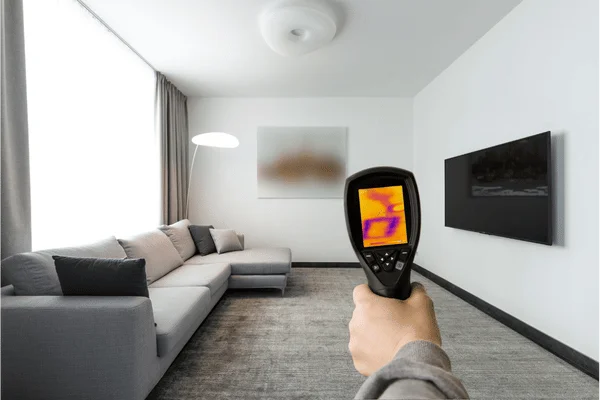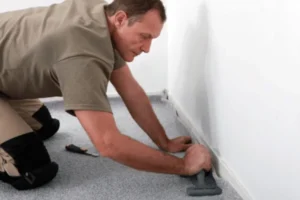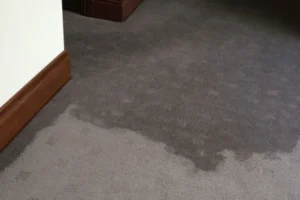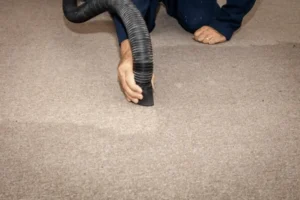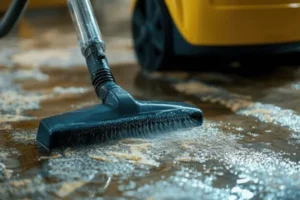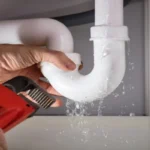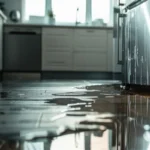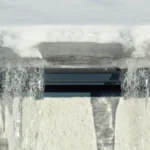Carpet water damage is something no homeowner wants to deal with, but ignoring it can lead to more significant, costly problems down the road. Whether caused by a leak, heavy rain, or a burst pipe, water seeping into carpet fibers and padding can go unnoticed until it’s too late. What starts as a damp patch or strange smell can quickly spiral into mold growth, structural issues, or permanent carpet damage. The key to minimizing damage? Spotting the warning signs early and taking quick, practical actions.
In this guide, we will walk you through how to detect carpet water damage before it becomes severe. We’ll cover visible and hidden signs to watch for, what immediate steps you can take, and when it’s time to bring in professionals. We’ll also share tips on preventing future incidents, so your carpets stay clean, dry and safe. If you’ve ever wondered how to fix wet carpet or what that musty odor really means, you’re in the right place.
Detecting carpet water damage early prevents mold. Dealing with water damage quickly is crucial, as even small issues can quickly get out of hand. This is why homeowners must watch for signs of water damage. Let’s break down what to look for, and what to do when water damage strikes.
Why Detecting Carpet Water Damage Early Is Crucial
Carpet water damage doesn’t just go away; it spreads, seeps deeper, and creates the perfect environment for mold and bacteria. Early detection helps prevent long-term problems and can reduce restoration costs. Waiting too long may lead to irreversible damage, especially if the carpet padding and subflooring are affected. That’s why recognizing the signs and acting quickly is so important.
Understanding the Risks of Ignoring Carpet Water Damage
Ignoring water damage in carpet areas can lead to more than just stains; it can also cause structural issues. Mold can begin growing within 24 to 48 hours in a damp environment, especially in dark, poorly ventilated spaces.
This puts your indoor air quality and your family’s health at risk. Over time, moisture can also damage the structural integrity of your flooring and subflooring. And if the source of the water, like a hidden leak, isn’t resolved, it can happen again. The longer you wait, the higher the cost and risk will be.
How Quick Action Can Save Your Carpet
The faster you act, the better your chances of saving your carpet and avoiding costly repairs. Removing water from carpet immediately after an incident helps prevent mold and mildew, while increasing the likelihood that your carpet can be restored rather than replaced.
Quick action may involve blotting, drying, and using specialized water extraction tools. In many cases, prompt intervention can prevent damage and subsequent repair. It’s all about being proactive instead of reactive.
Common Signs of Carpet Water Damage
Detecting carpet water damage matters. Dealing with water damage fast reduces repair costs. Learn the signs of water damage today. Water damage doesn’t always announce itself loudly, often, it is quiet and unnoticed until the warning signs become a bigger issue. By knowing what to look for, you can address the problem early.
Visible Stains and Discoloration
One of the first signs of carpet water damage is discoloration. You may notice dark patches, yellowing, or areas that look a bit “off” compared to the rest of the carpet. These stains often indicate that moisture has been trapped beneath the surface.
Don’t assume a stain is just dirt—it could be water-related, especially after a leak or flood. Even if the area appears dry, moisture may still be present beneath it. Left untreated, these stains can become permanent or indicate deeper issues, such as mold.
Musty Odors and Mold Growth
That musty smell you can’t quite place? It’s one of the clearest indicators of hidden water damage from carpet. Mold and mildew thrive in moist environments, and carpet provides the perfect conditions when damp. If the odor persists after cleaning, it likely means water is trapped beneath the surface.
You might not see visible mold right away, but that doesn’t mean it isn’t there. Mold can grow in the padding, subfloor, and even along baseboards, affecting indoor air quality and triggering allergies or respiratory issues.
Changes in Carpet Texture (Warping or Buckling)
Another common sign of water damage is a change in how the carpet feels or lies on the floor. If your carpet starts to wrinkle, ripple, or buckle in areas where it once lay flat, it’s likely absorbing water or has absorbed moisture in the past.
Water can weaken the adhesive used to keep carpet in place, causing it to loosen and shift. In some cases, you may notice that the padding underneath feels squishy or uneven. These texture changes often require more than drying—they may
Steps to Take Immediately After Carpet Water Damage
Detecting carpet water damage helps protect your home. Dealing with water damage and recognizing signs of water damage are essential steps. Here’s what to do right away when you discover carpet water damage.
How to Dry Carpet Quickly and Safely
Start by removing any furniture or items from the affected area. Use clean towels to blot and absorb as much water as possible. Avoid scrubbing—it spreads the moisture. Use fans and open windows to increase airflow, and place a dehumidifier in the room to accelerate the drying process.
If available, use a wet/dry vacuum to help remove water from the carpet. Remember: drying the surface isn’t enough. You must also ensure the padding underneath is drying properly, or mold may still develop.
When to Use Carpet Water Extraction Tools
If blotting and air-drying aren’t cutting it, it’s time to use carpet water extraction tools. These tools—often available at hardware stores or rental centers—can suction moisture from deep within the carpet fibers and padding. They’re far more effective than a household vacuum or towel.
Extraction is essential if the water source is contaminated (such as from a toilet overflow or floodwater). Knowing how to fix wet carpet means knowing when to switch from DIY to using proper tools that reach the root of the problem.
How to Inspect Carpet Padding for Water Damage
Carpet padding acts like a sponge, absorbing water and retaining it long after the carpet surface appears dry. Lift a corner of the carpet to inspect underneath. If the padding feels damp, discolored, or has a mildew smell, it’s likely holding water.
In many cases, padding must be removed and replaced, even if the carpet above can be saved. Trying to dry soaked padding without removing it usually leads to mold growth. Always inspect thoroughly to ensure you’re not leaving moisture trapped below.
When to Call a Professional for Carpet Water Damage Restoration
Sometimes, DIY efforts just aren’t enough. Here’s how to know when it’s time to bring in the experts.
The Importance of Professional Water Extraction
Professionals have industrial-grade equipment designed to remove water from carpets and dry them completely, including the layers beneath. They use moisture meters to detect hidden wet spots and thermal imaging to find water that may have traveled under walls or into baseboards.
This level of precision ensures no lingering moisture is left behind, reducing the risk of mold. Professional water extraction is often necessary when dealing with a spill or when water damage has gone undetected for more than 24 hours.
Why DIY Methods May Not Be Enough for Severe Water Damage
Attempting to handle serious carpet water damage on your own can backfire. Household tools just can’t reach the same depth as professional extraction equipment. Additionally, most homeowners lack access to antimicrobial treatments that prevent mold after removing water from their carpets.
If the damage comes from contaminated water (such as sewage or floodwater), it becomes a biohazard—something that only trained technicians should handle. DIY methods might fix what you can see, but they often miss what’s hidden. That’s why carpet water damage repair is best left to professionals in these situations.
How to Prevent Carpet Water Damage in the Future
Prevention is your best defense against repeat carpet issues. A few good habits and upgrades can make all the difference.
Regular Carpet Maintenance Tips
Routine cleaning keeps your carpet in good shape, but maintenance goes beyond vacuuming. Inspect for signs of moisture regularly, especially after storms or plumbing work has been done. Avoid installing carpet in moisture-prone areas, such as bathrooms or basements, unless proper barriers and waterproof padding are used.
If your home has a history of water issues, consider scheduling periodic inspections with a water damage expert. Prevention is more affordable than carpet water damage repair and saves you from needing to figure out how to fix wet carpet all over again.
How to Prevent Leaks and Flooding in Carpeted Areas
Start by checking plumbing under sinks, near appliances, and behind toilets for slow leaks. Install water alarms in vulnerable areas to detect leaks promptly. Ensure your gutters and downspouts direct water away from the home’s foundation.
In basements or low-lying areas, consider a sump pump and waterproof sealants. Prevention reduces the likelihood of ever needing help with carpet water damage or removing water from carpet in the first place. It’s about staying a step ahead of the water—before it takes over your floors.
Final Thoughts- Dealing With Carpet Water Damage
Detecting carpet water damage early can save your carpet, your budget, and your peace of mind. By learning how to fix a wet carpet, recognizing the signs to watch for, and knowing when to call in professionals, you’ll be better prepared to protect your home. If you’ve noticed any of the warning signs we covered—musty smells, stains, texture changes—it’s time to act. The longer you wait, the worse it gets.
Let the experts at SS Water Restorations help. We specialize in removing water from carpets, comprehensive carpet water damage repair, and restoring your home to its normal state quickly. Contact us today for a professional assessment.

